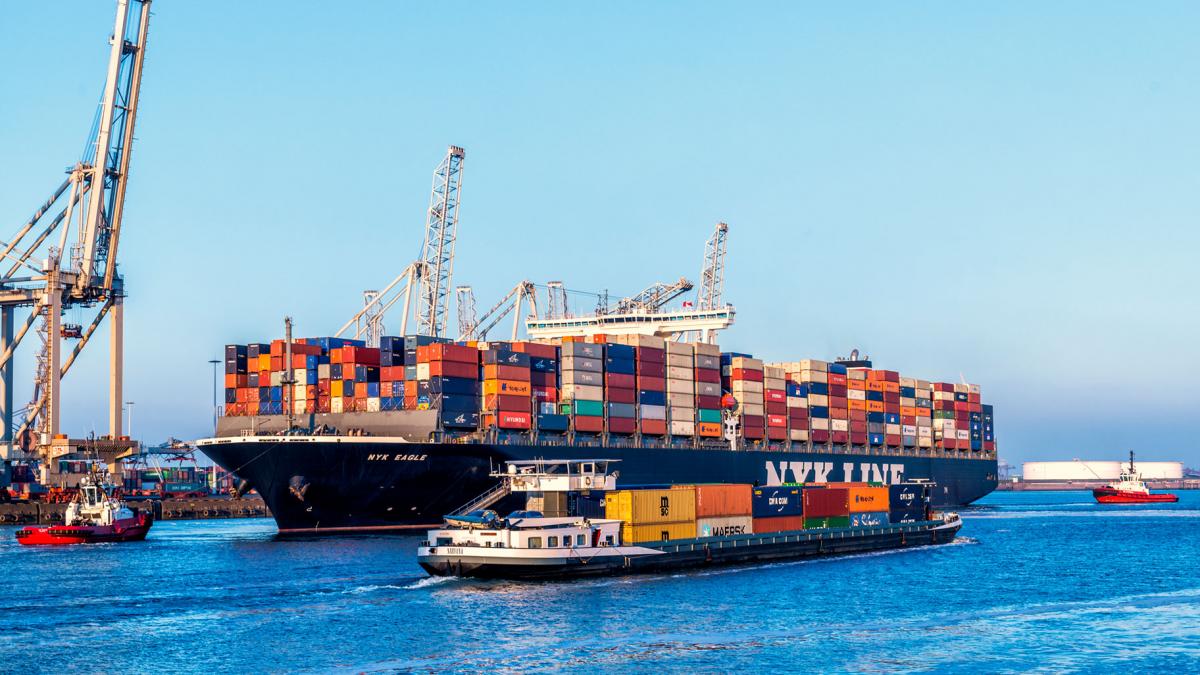U.S.-India Trade Surges, China Trails as Second 2023

U.S.-India Trade Surges, China Trails as Second 2023
In a significant shift in global trading dynamics, the United States has emerged as India’s largest trading partner during the fiscal year’s first half, spanning from April to September.
Surpassing China, which now stands at the second position, this development heralds a significant transformation in India’s international trading landscape.
Traditionally, China has been India’s major trading partner for a significant period, with the two Asian giants sharing robust economic ties.

The scale and nature of these exchanges have been vast, covering sectors ranging from technology and pharmaceuticals to consumer goods and industrial machinery.
Despite global economic uncertainty and dwindling exports and imports, the US has become India’s largest trading partner for the first half of the current fiscal year, according to official statistics.
The bilateral trade between India and the US decreased by 11.3% to USD 59.67 billion between April through September 2023 compared to USD 67.28 billion during the same period last year, according to preliminary figures from the commerce ministry.

From April to September 2023, exports to the US decreased from USD 41.49 billion to USD 38.28 billion. Additionally, imports decreased from USD 25.79 billion in the first half of the previous fiscal year to USD 21.39 billion this year.
However, several geopolitical factors, policy shifts, and global economic trends have been instrumental in reshuffling these trading partnerships.
Similar to this, commerce in both directions between China and India fell by 3.56 percent to USD 58.11 billion. Exports to China decreased slightly from USD 7.84 billion in the same time last year to USD 7.74 billion in the first half of the current year. Imports decreased from USD 52.42 billion to USD 50.47 billion in the previous year. Trade analysts predict that even if India and the US’s exports and imports are falling as a result of the slowing global economy, the growth rate will soon turn positive.
The trade war between the U.S. and China that began during the Trump administration and its accompanying tariffs undoubtedly affected global trade routes. While both countries looked for alternative markets and partners, India emerged as a key beneficiary.

Over the past few years, India and the U.S. have fostered closer strategic and defense ties. This political proximity has been matched by growing economic collaboration. Bilateral agreements, mutual investments, and joint ventures have played a pivotal role in increasing trade volume.
Following the disruptions caused by the COVID-19 pandemic and increased concerns about over-reliance on a single market, many countries, including India, have been keen on diversifying their supply chains. This has meant increased business with countries deemed politically and logistically favorable, such as the U.S.
Aimed at promoting local manufacturing and reducing dependency on imports, this initiative has indirectly influenced trade dynamics. While the focus has been on indigenous manufacturing, it has also opened the door for partnerships with nations that align with India’s strategic and economic aspirations.
Indian consumers’ increasing demand for electronic products, advanced machinery, and sophisticated services has found a willing supplier in U.S. companies. On the flip side, Indian IT services, pharmaceuticals, and other sectors have found a vast market in the U.S.

This shift ensures that India has a more balanced trade relationship, reducing over-dependence on any one country. This balance can prove beneficial in negotiations and in maintaining economic stability during global uncertainties.
With strengthened ties with the U.S., India can expect increased FDI, particularly in sectors like technology, defense, and infrastructure.
A stronger economic relationship with the U.S. may lead to India playing a more prominent role in geopolitical alliances, such as the Quad, which includes the U.S., Japan, Australia, and India.
The emergence of the U.S. as India’s top trading partner during this period marks a significant milestone in global trade dynamics.
While China remains a critical partner for India, the diversification of trade partnerships ensures a robust economic future for the nation and reinforces its position in the global arena.

As the global landscape continues to evolve, the dynamics between these three significant players will be keenly watched by analysts and policymakers alike.




